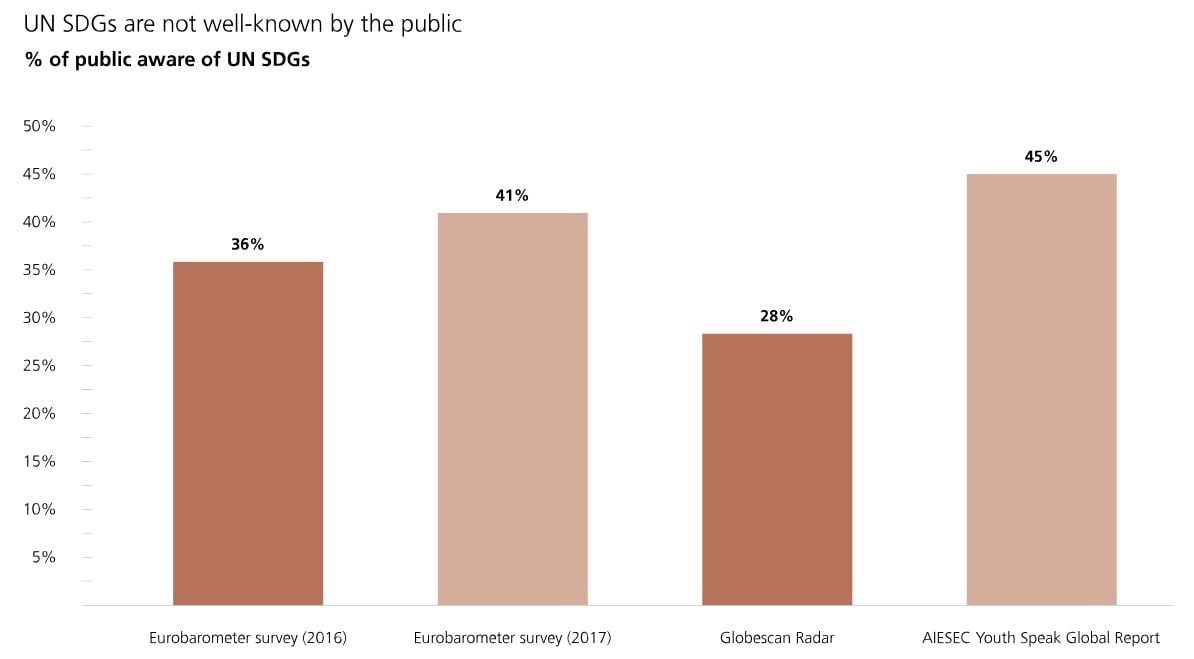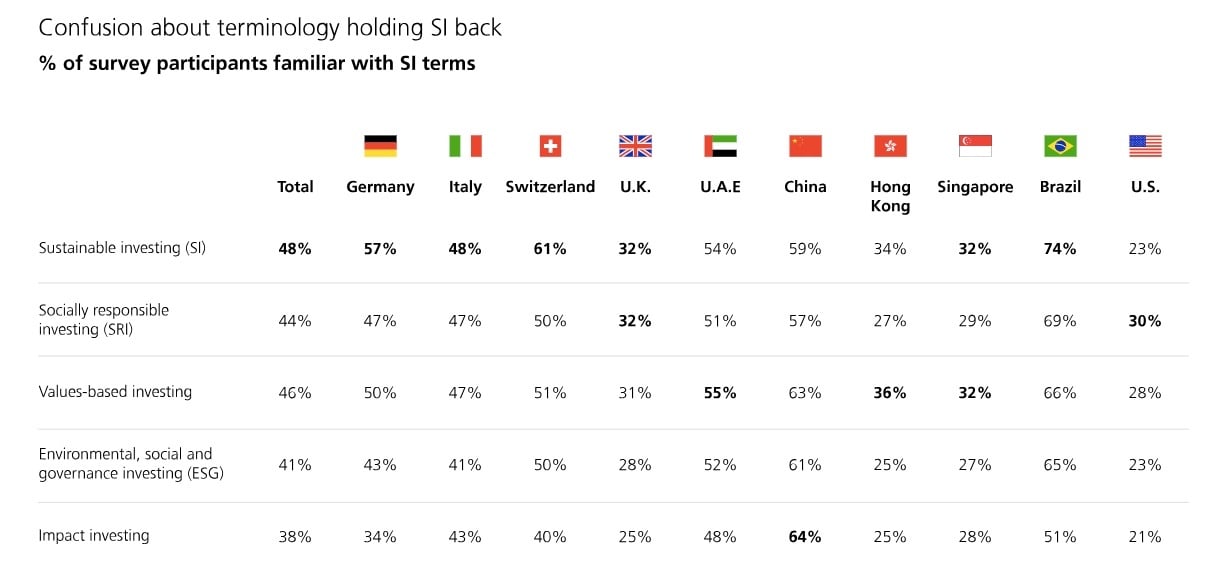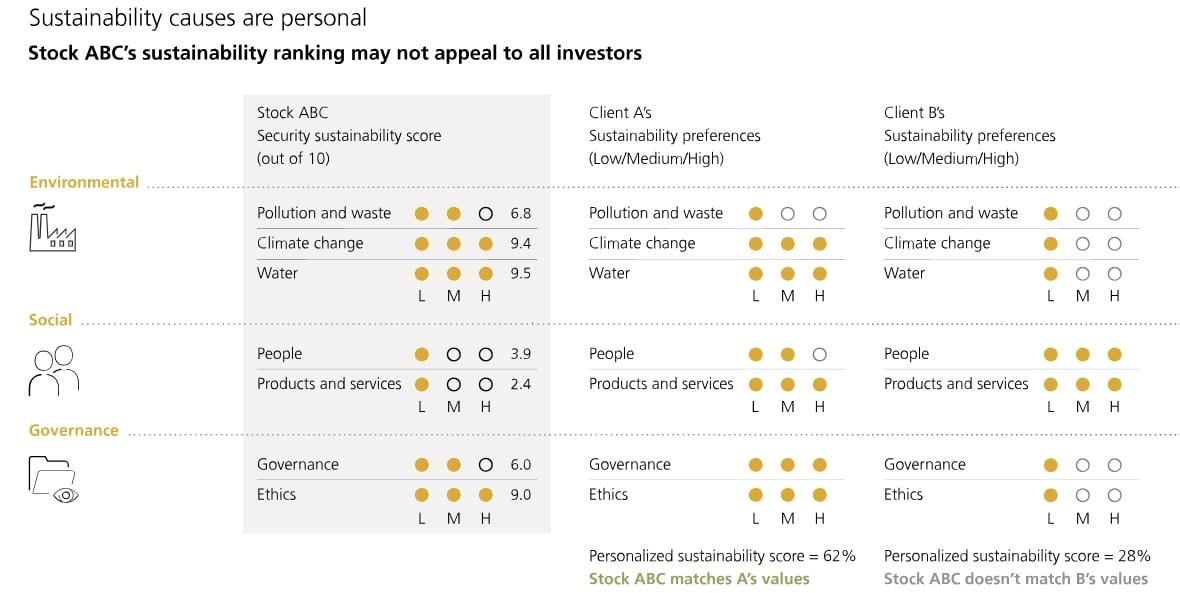
Source: OECD Development Communication Network, What People Know and Think About the Sustainable Development Goals, as of June 2017
Challenge 2: Sustainability is too complex
Lack of simplicity
“What is sustainability?” remains a valid question for today’s sustainable investors, philanthropists, and consumers.
Many institutions linked to sustainability list very complex criteria for investors, philanthropists, and consumers to use when making a sustainability decision.
Investors are overwhelmed by large amounts of sustainability data. For example, the World Bank Group is working hard to build more complete datasets for SDG needs and is currently engaging in around 300 active projects to improve data collection at a cost of USD 200m annually.
What can be done to simplify?
- Simplify, standardize, and mainstream corporate sustainability data reporting
- Define impact investment and impact measurement coherently and consistently
- Name sustainable investing (SI) strategies in a clear, consistent manner so they can be universally adopted

Percentage of UBS Investor Watch survey participants that are "extremely familiar" or "very familiar" with sustainable investing (SI) terms. Source: UBS Investor Watch Survey - Return on values: most sustainable investors expect better performance, bigger impact, as of September 2018.
Challenge 3: There aren't enough sustainable solutions that really make a difference
Lack of contribution
Inconsistent application of sustainability factors (such as failing to integrate ESG factors fully) across asset classes hampers investors’ ability to contribute to the SDGs. Sustainable investors who rely on external rating systems to select instruments can also face confusion when attempting to match investments to their values, given the large variation in how rating firms judge the ESG factors that matter most.
Many philanthropic foundations also do not fully align their operations with their impact mission, as seen in the ways they invest their endowment capital. Fewer than half of European foundations manage their endowment capital in a sustainable way.
How to make a contribution
- Use publicly-traded strategies in traditional portfolios that focus on market-rate performance while also having an actual positive social and environmental impact
- Adopt a true 100% SI asset allocation that seeks to deliver market-rate returns and have verifiable positive impact
- Focus on collective and collaborative philanthropy

Source: UBS Global Wealth Management Chief Investment Office, as of November 2018. For illustration purposes only.